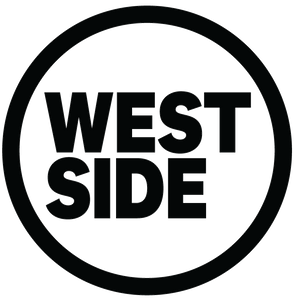
How This Canadian Campaign Addressed Violence Against Transgender Communities

For those who identify as transgender, it can be a hard existence. Often, your body doesn’t feel right, unless you spend years undergoing the correct - and frequently expensive - medical processes and procedures. Then, there’s the dysphoria. And, perhaps worst of all, socially, there’s a lot of stigma and hatred, when you yourself are fighting just to exist as the person you want to be. It’s not an easy life, and those who dare to be their true selves, in spite of what anyone thinks, are some of the bravest people to walk this earth.
Unfortunately, bravery shouldn’t have to be nearly as necessary as it is, especially in a country like Canada. While other places around the world go back and forth, or are delusionally determined to enforce the idea that being trans should be illegal, Canada prides itself on being accepting of gender identities and supportive of the transgender community… supposedly. Broad policy is fine, and it’s certainly better than in many places, but the truth of the matter is, it doesn’t always represent the views and actions of the people. And, as a study by organisation White Ribbon and Angus Reid shows, nearly three quarters (73%) of Canadians believe trans people face more violence and discrimination compared to cisgender people – a number that jumps to 81% for Canadians who know someone who is trans - which is further validated by the fact that, ultimately, trans people have a shorter life expectancy than their cis counterparts.
To represent this fact, and the need for further action and advocacy, White Ribbon worked with agency Bensimon Byrne, Westside Studio director Angie Bird, and School Editing to create an equal parts heartfelt and heartbreaking view of what this life actually looks like. Telling a story inspired by all-too-real events, the two-minute PSA, ‘Short Life Stories’, tells the story of a woman named Vivian, traversing the moments of beauty and richness in her life, the struggles she faces, and ultimately, the tragic, thoughtless actions of one senseless bigot.
To learn what it took to bring this to life, LBB’s Josh Neufeldt sat down with Angie, as well as School Editing senior partner and editor, Izzy Ehrlich for a chat.
LBB> How did you both get involved in this campaign, and why was this something you were keen to do?
Angie> When I saw this campaign from the agency, I was immediately struck by its insight that transgender people have shorter life expectancies than cisgender people. It was such a simple and devastating statistic that I don’t think a lot of people know. I am part of the LGBTQ+ community, so I felt a deep obligation to help share this information and try to do something for the trans community.
Izzy> I was honoured to have been invited to edit this film by Angie. As a queer female film editor, my personal experiences fuelled my eagerness to contribute. I saw this project as a powerful opportunity to bring awareness to some of the unfortunate realities trans people and members of the community face every day.
LBB> Tell us about the storyboarding process! What immediate ideas came to mind?
Angie> Initially, the script had three separate stories with three different characters that were not connected. However, I felt like dividing the two minutes of screen time between three characters wouldn't allow us enough time to get very deep into who they were. So, I suggested making the three main characters best friends, meaning that we could have more screen time with them all, which would allow the audience to connect on a deeper level with the characters and see their love, friendship and ultimate heartbreak. Additionally I liked this approach because often for young people, and especially queer people, your friends become your chosen family - your greatest support system - and it’s important to pay homage to that key emotional dynamic.
LBB> Building on this, despite the fact that the story is fiction, it’s based on a tragically all-too-real truth that many trans people face. As such, how did you approach balancing the fictional setting with realism?
Angie> When the agency and I were building out the scenes, we took a lot of guidance from the research White Ribbon had so that we could make informed decisions about what moments/scenes were really important to tell. For example, the research shows that tension and violence can come from within the home, so we created characters of a supportive mother but a hostile father to show those different experiences a young trans woman may face. We also know that washrooms are a catalyst for the anti-trans political agenda and that rhetoric causes violence, so we specifically chose the final confrontation scene to be situated around a washroom environment. Every character, scene and performance was based on real life experiences that the trans community faces, and our three heroes helped us bring these facts to life in a human and authentic way.
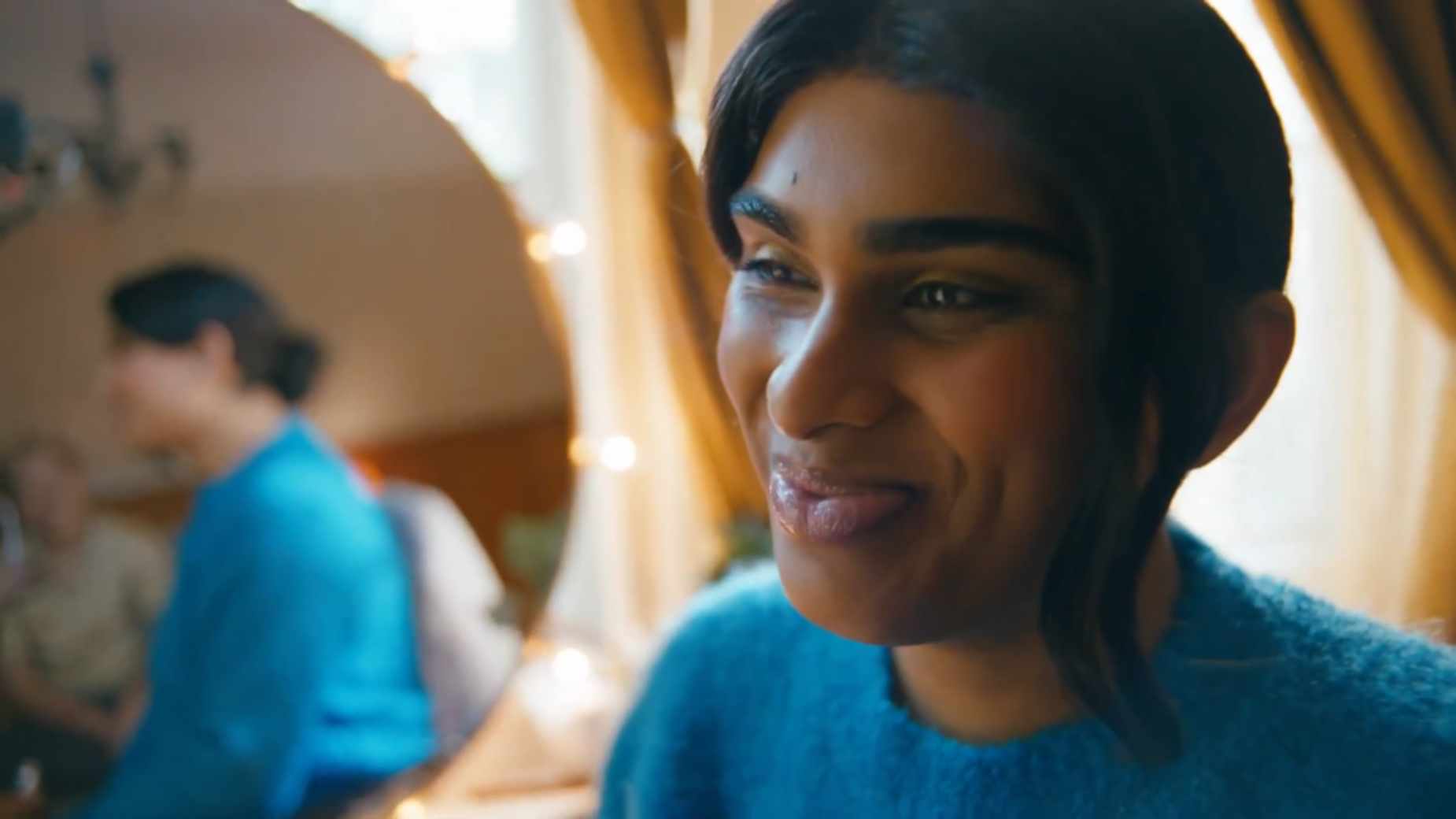
LBB> From here, how did the spot evolve? How did you amalgamate the PSA-tone with the narrative approach?
Angie> White Ribbon, Narrative and Bensimon Byrne have a wonderful partnership, so when I came on board they were able to give me information and insights into how they came up with the concept for ‘Short Life Stories’. Along the way, I would come up with my interpretation of the script; for example, making the three leads best friends. White Ribbon and Narrative were very open to all my creative choices along the way, including how I wanted to shoot the confrontation scene - the life flashing before her eyes and ending on the grief of the friends. It was so rewarding working with a client and agency who allowed me so much creative freedom during the whole process. I always felt like they were there to guide me on the authentic truths and statistics while also supporting my creative vision.
LBB> Tell us about the casting process - what made Kiara-Kumail the right star for this production? And for the rest of the cast, how did you find the right people to tell the story authentically?
Angie> The casting was so incredibly important for this story. Shasta and her team at Jigsaw Casting were so generous and dedicated to getting us the perfect cast. They went above and beyond and I am so thankful to them.
We held casting sessions with actors and non-actors in Toronto, New York and Vancouver. We also used our own personal networks on social media to spread the casting call. I actually slid into Max’s Instagram DMs and asked them to apply, because I felt like they had a special something about them. We knew we wanted to find a trans woman to play the Vivian role and the two additional roles could be anyone from the trans or non-binary community, with lived experience that they could draw on to deliver a raw and emotional performance.
Kiara-Kumail blew us away in the audition with her own personal story and the way she was able to deliver such a range of performances, from unbridled joy to a nuanced unease. She was delicate at times and fierce at others. And ultimately, we wanted to find three actors who could sell the idea of being best friends and Kiara, Max and Rhys all delivered on that.
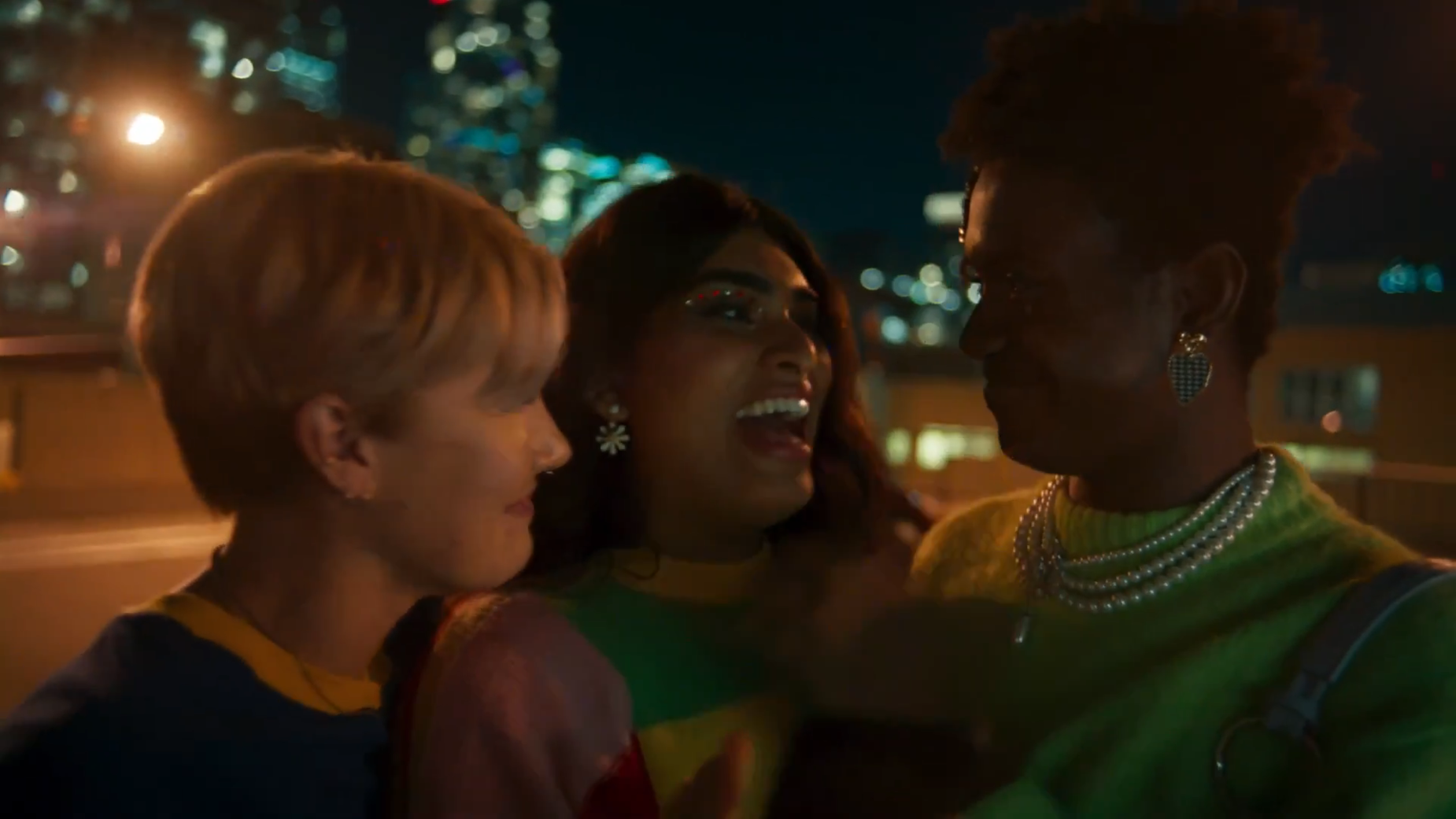
LBB> What was the process like leading up to shooting? How did you find the ideal locations, and were there any specific obstacles or factors you had to work around?
Angie> With a PSA, money is always the biggest obstacle, but with the hard work of our amazing producer, Michelle Woodward, and resourceful PM, Sebastian Merecki, we were able to get amazing deals that helped us push the creative even further. Westside and all our vendors were also key in helping us pull off this shoot - their support was instrumental to the success. I honestly don’t know how they pulled off so many logistical miracles.
LBB> And what was the shoot itself like? How long did it take, and do you have any anecdotes from on set?
Angie> We had about four weeks for pre-production and the shoot was three days. The first day was the convenience store, then a move to the house. The second day was the bar and vigil scenes, and in order to get a third day of shooting, we had a paired-down crew and ran about town getting additional scenes. The agency was amazing in giving us creative control and freedom to shoot all of those scenes on our own on that third day. We got so many amazing scenes on day three, including the TikTok scene, skateboarding, the picnic, take out, the parking lot, and even an additional art gallery scene that had to be cut for timing. Having trust from the agency who gave over creative control and having a tight, well-oiled crew made that day amazing and very fruitful.
An anecdote from set that I will never forget happened during the dancing scene at the club. Max is a vogue dancer in real life, so I had them lead the dance scene with their own improvised and amazing dance moves. The larger friend group also consisted of some talented dancers, so the energy and skill from the group was amazing to witness. We blasted queer club anthems and let them do their thing. But my favourite moment came when I called ‘cut’ and shut off the music, and beside me I heard Tyler, the actor who plays the bully in the washroom say, ‘Woah…that was awesome!’. I don’t know if Tyler has ever seen voguing in real life before, and I just loved that he was a supportive cast member even though he played the villain in the story. It was such a joyful moment and I felt great about how safe the set was.

LBB> In this piece, there are a lot of cool details that represent the timeline of the protagonists’ transition, and the hallmarks of the transgender journey, such as the way her look changes. How did you integrate these in a subtle but effective way?
Angie> It was important to show a passage of time where Vivian becomes more comfortable and confident in her journey. We did that through not only milestone moments, but also through hair, makeup and styling. For example when Vivian takes off her jacket and sits down for her passport photo, she is left feeling a little exposed and judged by the store owner. And juxtaposing that, when Vivian, Max and Rhys are in the celebratory club scene at the end, I had them each in clothes that reveal some skin, because I wanted to show them literally and figuratively feeling empowered and comfortable in their own skin. Richard Autio, our wardrobe stylist, and our MUA, Alanna Fennell, did such an amazing job of not only the styling, but also taking incredible care of our cast and making them feel safe and protected during this vulnerable process.
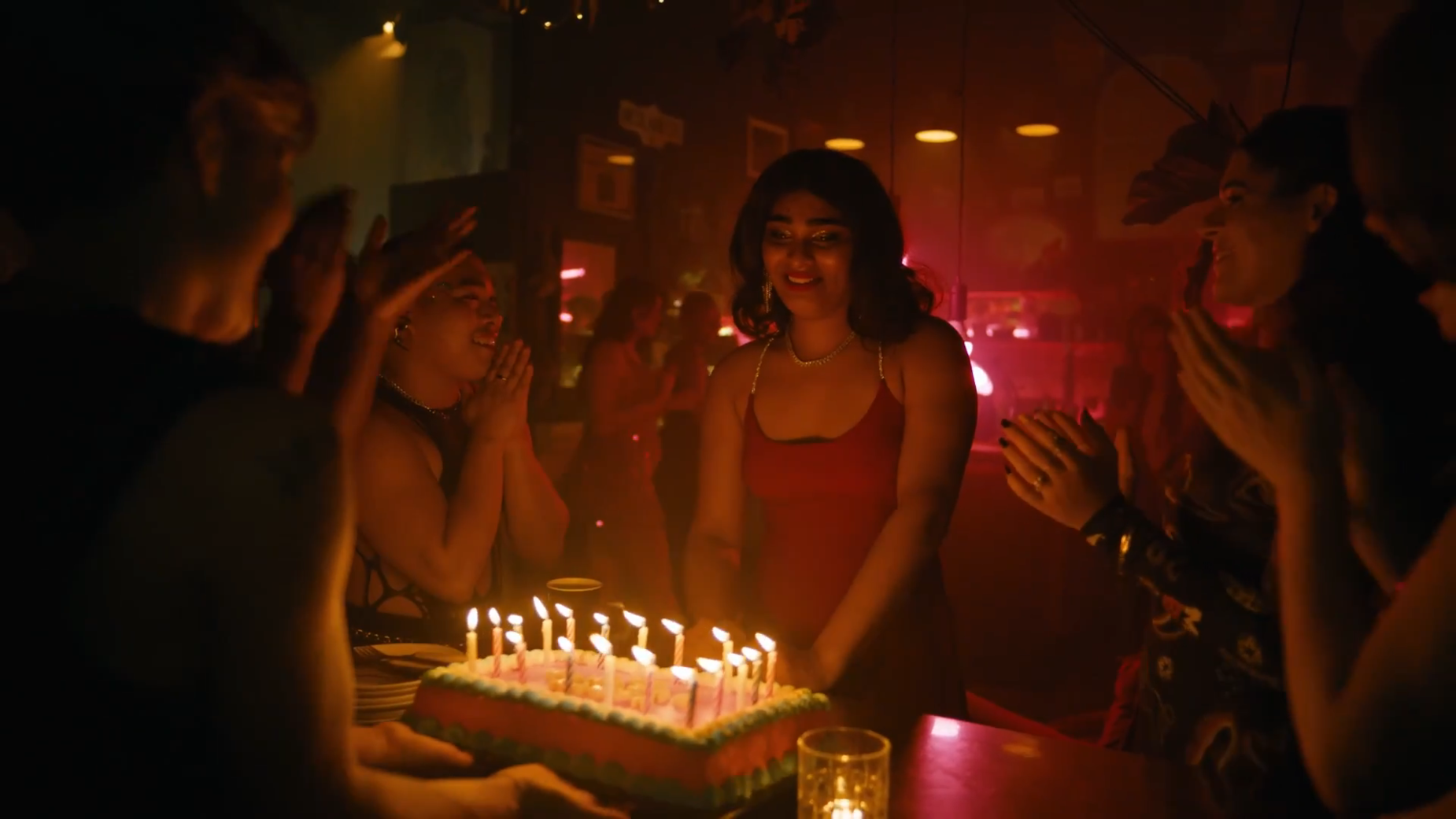
LBB> What type of gear did you bring to the shoot, and what led you to make the choices you did?
Angie> We shot on the ARRI Mini LF with T-tuned Blackwing lenses. This camera set up on an EasyRig or handheld allowed us to be nimble and weave through the characters in each scene, while still delivering an incredible, high-quality cinematic look and feel. For the club dancing scene, we used a steadicam to glide softly in slow motion around our dancers. For the lighting in that scene, we used a projector that was aimed towards the camera and displayed ambient, abstract colours streamed from YouTube. It was a way to get the lighting effect I wanted, without using club light lasers that might damage our camera. Our amazing DP, Daniel Grant, showed me this technique and I’ll definitely be using it again, I love the way it looked!
LBB> And as a whole, how did you approach capturing both the moments of joy and tragedy in such an authentic way?
Angie> The confrontation scene was very choreographed because we were so conscious of not showing violence. However, for all of the other scenes we took a looser, more documentary approach. I would set up the scene, give the actors the intention for the scene and their motivation, and then encourage them to improvise how their characters would feel in that situation. Kiara, Max and Rhys did an incredible job of bringing authenticity and genuine energy to the work.
The cinematography was designed to immerse the viewer in the lives of our characters. The camera is often up close and personal. It’s free-floating so the audience feels like they are right there in the friendship group which helps them feel really connected to the characters. The fluidity of the camera gives an almost docu feel which adds to the authenticity and intimacy of each scene.
The lighting was designed to convey emotion and build on the themes of our story. For example when Viv walks into her family home and sees her cold and tense father, the light in his world is cool daylight, while when she rounds the corner to go up to her room, which is her sanctuary, she is bathed in a warm light that feels safe and comforting. When Viv and her friends are on the dancefloor joyfully dancing, they are immersed in vibrant rainbow lights that pay homage to their community. And when we get to the washroom altercation scene, we lit the bully in a dark, cold light and used pink and blue lights in the bathroom stalls to build on the traditional gender stereotypes.
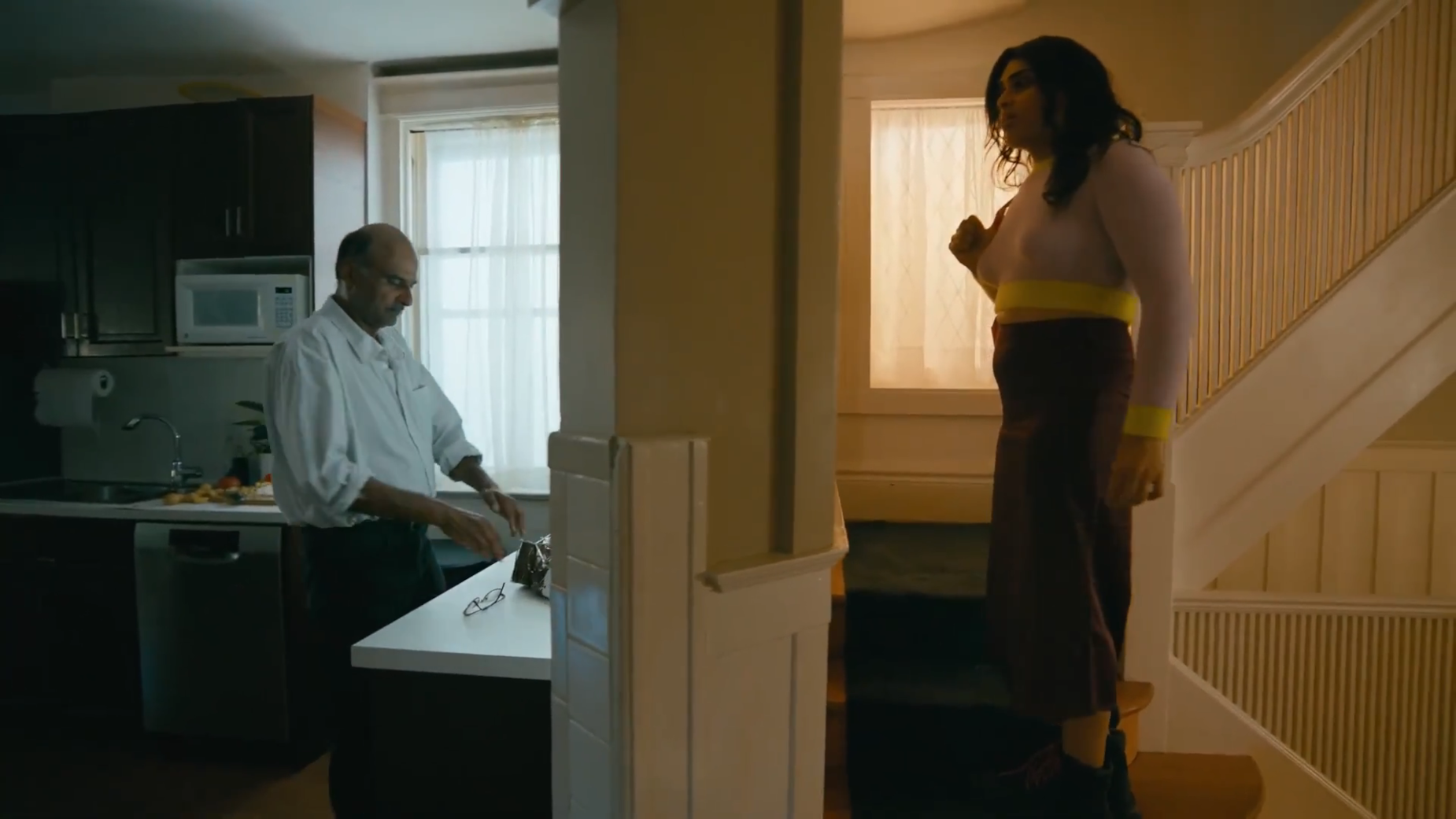

LBB> From here, how did you get started with the editing process? And how did you work to craft emotion and mood into the work, to thereby enhance the story and feel of the film?
Izzy> The editing process began far before cameras started rolling. Early on, Angie and I engaged in numerous discussions about the flow of the story, and what shots we envisioned to be the most compelling and important to building the narrative. Being involved from the pre-shoot stage allowed us to align our visions and set the foundation for a successful editing journey.
Creating emotion and mood in a film with a poignant narrative demands a delicate yet strategic storytelling approach. So, I aimed to infuse emotions seamlessly into the story, ensuring every frame exuded authenticity and empathy.
The subtlety of the film lies in the gradual revelation of societal judgments against the protagonist. Through nuanced visuals, sound design, and editing, my aim was to subtly hint at the challenges Vivian faced without explicitly revealing the ultimate tragedy that unfolds at the end.
LBB> In particular, the juxtaposition of happy moments with the stark reminders of the realities trans people face is heart wrenching. How did you achieve this through shooting techniques and the edit?
Angie> So often, trans stories in the media are violent and triggering to the community so we wanted to avoid that altogether. We knew we needed to get across the heart wrenching fact that trans lives are cut short, but we felt a responsibility to do it in a way that was not overtly violent and graphic because we didn't want to trigger the community we were trying to advocate for.
All in all, it was a fine line between truthful messaging and respectful and ethical execution.
A lot of consideration went into the design of the end confrontation scene specifically, so that it would speak to the facts while being tactful and sensitive to the community.
The creative choices behind the key points of confrontation scene were:
- Trans women of colour are more affected by violence, so we chose to have the bully start the fight with Rhys but he ultimately escalates when Vivian intervenes and tries to calm the situation, and she is the unfortunate victim of the violence.
- We intentionally designed the scene using quick cuts, multiple angles, frenetic sound design including the most hectic part of the song and audio from the characters all to help enhance the tension and chaos as a way to feel the violence without seeing it.
- It was also very intentional that when the violent push from the bully happens, we dont show that happening to Vivian/Kiara (to avoid triggering visual violence). Instead we show it from her POV. We wanted the audience to feel how terrifying it would be to be attacked like that.
- The camera (which is Viv’s POV) then falls backwards and we see a bright light on the ceiling as we fall backward to the floor. This bright light is visually jarring and also metaphorically catapults us into Vivian seeing the light and having her life flash before her eyes.
We also chose to not end the story there, instead we wanted to end on a vigil scene where the audience could see the devastation and grief that this senseless act of violence left in its wake. Because this type of violence doesn't only affect one person, it breaks a whole community.
Izzy> Our goal was to evoke emotions without prematurely revealing the tragic ending. This came through the visuals and cues of numerous micro-aggressions - each one contributing to the devastating culmination of her journey.
For me personally, crafting that final sequence really hit hard. Seeing a trans person lose her life on a day meant for celebration is a reality that the queer community is all too familiar with. As a queer woman who's faced my share of hate, I channelled all those emotions into this sequence, laying it bare on the timeline. It was about making it raw, and making it real. Notably, the edit flows very well to the selected soundtrack.
LBB> And how did you approach cutting around the music?
Izzy> We wanted the soundtrack to be a narrative partner - not just background noise. So, we put a huge emphasis on finding the perfect track; one that would evoke emotion and also help narrate the story. The lyrics of the song were an underlying guide track of the story, a soundtrack to her life. I also strategically used moments of silence as a tool to create tension. Sometimes, silence can be just as powerful as sound.
LBB> When it came to aesthetics and the look and feel, what were your main aims and ambitions and how did you achieve them?
Izzy> My main goal for the film's aesthetics was to capture absolute authenticity - it had to feel 100% genuine. Credit for the brilliant aesthetic goes to Angie and DP Daniel Grant. Their vision set the tone, and my role was to ensure this authenticity smoothly translated to the screen through mindful editing choices while preserving their artistic vision.
Angie> I wanted all of the scenes with Vivian’s friends to feel vibrant and joyful, and I wanted all of the scenes with tension and microaggressions to feel subtly cold, and almost sterile and uninviting. We achieved this look and feel through lighting, art direction and styling. Our art director, Abigail Chevalier, and her crew did an incredible job of bringing each space to life exactly how I imagined, with such little resources. I'm so grateful for all of their hard work.

LBB> What challenges did you face during this project, and how did you overcome them?
Angie> We had such a small crew on this job and big ideas to execute. As such, I feel grateful to everyone who hustled so hard to bring this to life. Our key grip, Cait Lusk, and our gaffer, Hayden Salter, pulled off some pretty epic setups, including going night for day in the club scene which was at a location with about 1000 windows. Honestly, just everyone on the crew hustling so hard and with so much positivity made this project a really special one.
Izzy> Post-production was a brilliant process, and honestly, I didn't encounter many editorial challenges, as the footage I was given to work with was so beautiful. The agency was incredibly collaborative, allowing me to do what I do best… EDIT!!!
LBB> Finally, are there any elements of the project you’re particularly proud of? And why?
Angie> We had so much amazing footage from this shoot - it was actually really hard to get it down to two minutes because I loved every shot. I’m very thankful to Izzy, who time and time again helps me craft emotive edits that always get people in the feels.
I’m also so thankful to our cast who threw themselves into this experience with such genuine emotion, and who were brave enough to go to some really vulnerable places. Overall, I just hope this helps educate people that trans rights are human rights. I hope we change some hearts and minds for the better with this project.
Izzy> I'm stoked about this film, top to bottom. The editing freedom I had was everything, all thanks to the director, the agency and the client. They let me vibe and do my thing. Forever grateful for the beauty and collaboration that shaped this project, and I’m proud to bring such an important message to life.








